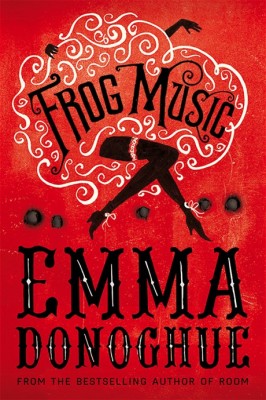
Ever since I was a teenager, and realised I had a choice about it, I’ve tended to avoid reading the blurbs of books before I read the books themselves. Possibly because so many copywriters are failed novelists, I’ve often found that blurbs are far too eager to try to dictate to me what the subtext of a book is, or explain its thematic intentions. I’d rather dive into a novel without preconceptions about what I should expect to find there.
So I can hardly blame anyone for the fact that this novel, which I expected to be a bawdy murder mystery about dead showgirls in 19th century San Francisco, defied my expectations by turning out to be a far more serious, and frankly slightly traumatic, domestic violence narrative. The main character is French immigrant (or, I suppose, immigrante) Adele Beunon, called Blanche, and known professionally as Blanche la Danseuse – her profession being that of exotic dancer and sometime prostitute (so I got that part right). Set during the heatwave and smallpox epidemic of 1876, the novel follows Blanche’s life over the course of a month, and is centred around the murder of her friend, Jenny Bonnet, a frog catcher and vagrant who has been arrested several times for dressing like a man. Blanche, who missed the bullet that killed Jenny by coincidentally bending down to untie her gaiter, believes from the first that the murderers are her cast-off lover Arthur and his friend Ernest. From that point, the novel retraces itself back over the history of the relationship between Blanche, Arthur, and Ernest, which is characterised by emotional manipulation and occasional physical violence and intimidation. It’s clear to everyone but Blanche that Arthur is using her, living off her earnings while verbally abusing her as a whore.
I struggle to think of a single sentence of this book that fails to ring true. Its observations about emotional abuse and domestic violence are spot-on, its historical details are beautifully rich, and the characters, even those who are only roughly sketched, spring to life. The oppressiveness of the heat is almost choking. The only thing that was maybe a little modernised was Blanche’s sympathy for her persecuted Chinese neighbours; it’s difficult, after all, to sell a modern audience on siding with a racist protagonist, but I suspect that the real Blanche probably wouldn’t have troubled her conscience with their plight.
That’s another thing, which I only learned from Donoghue’s afterword: almost all of the characters in the novel are based on real, historical people. Blanche la Danseuse really was a San Francisco showgirl (but though Madame Johanna’s House of Mirrors on Sacramento Street also existed, it’s not clear whether Blanche danced there). Jeanne Bonnet actually was shot dead at San Miguel Station in 1876, though her murder (solved in the book) remains officially a mystery. She is also, apparently, now widely celebrated as a folk hero for her pioneering refusal to submit to gender norms. A great, intriguing and unique read.